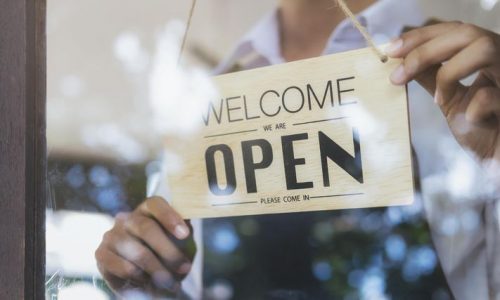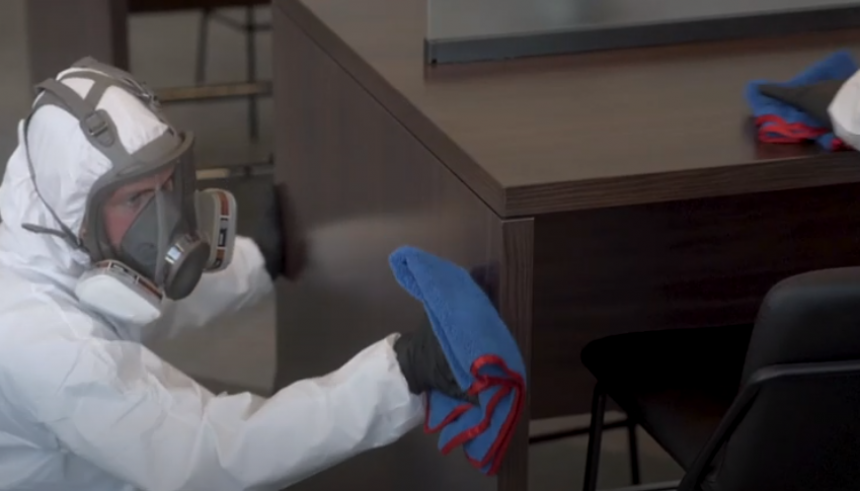Helping local hospitals, schools, gyms and businesses
FLUX RESTORATION
EPA Certified Cleaning Experts
COVID-19 Essential Cleaning
and Disinfecting
The demand for deep cleaning and disinfecting services are at an all time high with Coronavirus and COVID-19 on everyone’s mind. Now it’s more important than ever to provide a safer environment for businesses, multi-family homes, commercial centers, food service, retail stores, government offices and industrial facilities.
We are equipped with the latest technology for interior and exterior cleaning of buildings and public places including places you many not think to clean.
•Misting application of horizontal surfaces
•Application of Disinfectants by Experts
•Pressure Washing
We know that daily operations are the main concern of businesses. When you’re out of business due to COVID-19, that’s a tremendous revenue loss. We can help you day or night to get your business back up and running if you ever have an outbreak. Our main goal is to protect employees, customers/clients/patients and the general public
Our Process:
We laser focus on high traffic areas and touch points including entryways, lobbies, office spaces, computers, desks, elevator buttons, keyboards, shopping carts, floors, tables, chairs, rails, and counters. We are trained to see and find all touch points that may not come easily to the untrained eye like elevator buttons and phone keypads.
• Bactericidal Activity (Pseudomonas & Streptococcus)
• Antibiotic-Resistant Bactericidal Activity (MRSE & PRSP)
• Virucidal Activity (H1N1, HIV-1 & Rhinovirus)

- Wipe Down of all major touch points using EPA approved disinfectants
- Misting of all areas to reach tough access points
- Using Hydroxyl Generators with UV lights to disinfect.
Reopen with Confidence
Our process includes a safety checklist and guidance on how to properly return to your business safely. It is very confusing navigating all the new protocols,that is why our team of experts are here to help make that transition as smooth as possible.
Building Inspection and Safety
Our team of experts are trained in building safety and biohazards such as mold remediation, asbestos, lead, HVAC, duct cleaning and disinfection. When we clean your facility, we look out for potential hazards during our inspections so you can return to work safely.
24 Hour Outbreak Cleaning
We understand that COVID-19 will strike out of nowhere and your business needs to keep operating, that is why our team is dedicated to 24/7 service day or night to get your building cleaned with no excuses. We make it simple in this time of uncertainty.
Level 1
Precautionary Deep Cleaning-
No known case of COVID-19
-
Maintain safety and clean environment
-
Touch point and high traffic area cleaning
-
Application of products on EPA List N
Level 2
Potential COVID-19 Exposure Cleaning-
Potential case of COVID-19
-
CDC recommended cleaning
-
Full deep cleaning
-
High levels of PPE required
Level 3
Confirmed COVID-19 Cleaning-
Tested positive for COVID-19
-
Complete disinfection and cleaning
-
Level 3 cleaning protocol
-
Max level of PPE required

Flux Restoration is utilizing Aerosol Research & Engineering Lab (ARE) tested hydroxyl generators that have a kill rate between 4 and 5 log reductions (99.99%-99.999%) within 2 hours. These radicals are scientifically known to react one million times faster than ozone, bleach, or other cleaning agents, proven to kill enveloped viruses.


Public facilities and businesses with confirmed cases of COVID-19 will need a customized protocol specific to the site plans to ensure proper protocols are met. We will work with customers to develop a customized plan. If you cannot hire a certified hygienist to assist with a protocol, Flux Restoration will follow CDC recommended guidelines to clean.
Deep cleaning and wipe down of common and high traffic areas of facility
Disposal of all waste and bio-hazards
Personal protective equipment and respiratory protection for all staff
Disposal of all waste and bio-hazards
Decontamination and Disinfecting with EPA Registered Products and Hydroxyl Cleaners
Verification of cleanliness through ATP Testing
If the machinery or equipment in question are not accessible to employees or have not been in contact with someone infected with COVID-19, they will not present an exposure hazard.
If machinery or equipment are thought to be contaminated and can be cleaned, follow the CDC cleaning and disinfection recommendations. First clean dirty surfaces with soap and water. Second, disinfect surfaces using products that meet EPA’s criteria for use against SARS-Cov-2external iconexternal icon and are appropriate for the surface.
If machinery or equipment are thought to be contaminated and cannot be cleaned, they can be isolated. Isolate papers or any soft (porous) surfaces for a minimum of 24 hours before handling. After 24 hours, remove soft materials from the area and clean the hard (non-porous) surfaces per the cleaning and disinfection recommendations. Isolate hard (non-porous) surfaces that cannot be cleaned and disinfected for a minimum of 7 days before handling.
Employers should remain alert of changing outbreak conditions, including as they relate to community spread of the virus and testing availability, and implement infection prevention measures accordingly. As states or regions satisfy the gating criteria to progress through the phases of the guidelines for Opening up America Again, employers will likely be able to adapt this guidance to better suit evolving risk levels and necessary control measures in their workplaces.
Employers should assess the hazards to which their workers may be exposed; evaluate the risk of exposure; and select, implement, and ensure workers use controls to prevent exposure. The table below provides examples of environmental services work tasks associated with the exposure risk levels in OSHA’s occupational exposure risk pyramid, which may serve as a guide to employers in this sector.
